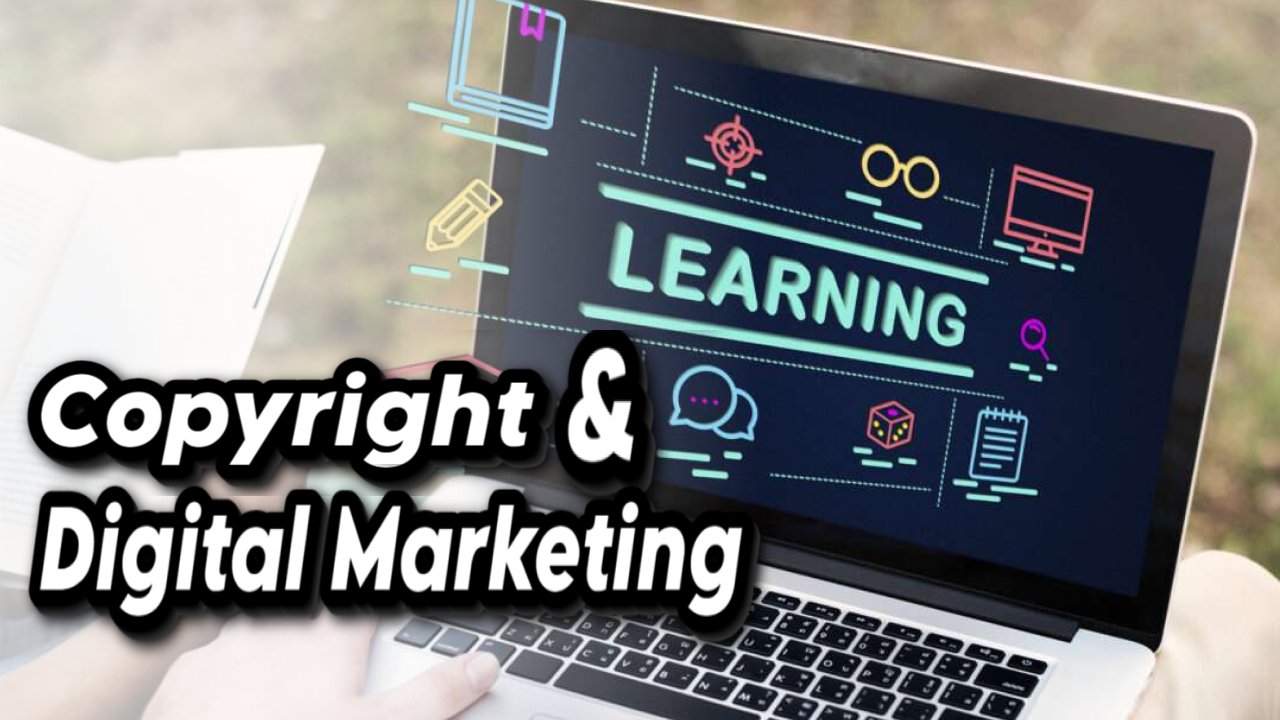Copyright and Digital Marketing: Analysing the Impact of Distance Learning
This article analyzes the impact of copyright in the realm of digital education, particularly in the context of distance learning. With the evolution of digital tools and platforms, the educational landscape has transformed, offering increased accessibility and flexibility. However, this transition has also raised concerns about copyright infringement, fair use, licensing challenges, and the role of technological solutions like Digital Rights Management (DRM). The article explores the intricate intersection of copyright and digital education, emphasizing the importance of striking a balance between protecting intellectual property rights and ensuring widespread access to educational materials.

Introduction:
The emergence of digital education has revolutionized the way we learn and has brought about a convergence of technology and education. With the advent of distance learning, which has been accelerated by the global COVID-19 pandemic, there have been significant changes in the way education is delivered. However, the transition to digital platforms has also raised some important questions, particularly surrounding copyright and its impact on educators, students, and content creators.
The intersection of technology and learning has led to the creation of a wide range of digital tools and platforms that have become essential to the educational landscape. These digital tools and platforms have made it possible for students to learn from anywhere in the world, and for educators to reach a wider audience. The benefits of digital learning are numerous, including increased accessibility, flexibility, and convenience.
However, as the education industry has shifted to digital platforms, there have been concerns about copyright infringement. With the vast amount of content available online, it has become increasingly difficult to determine who owns the rights to certain materials, and what constitutes fair use. This has implications for educators, students, and content creators alike. Educators must be careful not to infringe on copyright when creating and sharing materials, while students must be aware of the potential consequences of using copyrighted materials without permission. Content creators, on the other hand, must be vigilant in protecting their intellectual property.
Impact of Copyright in Digital Education:
There are various ways that copyright laws impact digital education in distance learning and some of these are:
Copyright in the Digital Learning Environment
Copyright laws are a set of legal rules that are in place to safeguard the intellectual property of content creators. The purpose of these laws is to ensure that creators have complete control over the use and distribution of their work. In the world of digital education, the role of copyrighted materials, such as textbooks, articles, videos, and other resources is of utmost importance. These materials play a crucial role in the learning process. However, the use of these materials in online classrooms can raise complicated issues concerning fair use, licensing, and permissions.
Fair Use and Educational Exceptions:
In the realm of digital education, a critical factor to consider is the doctrine of fair use. Essentially, this doctrine permits the controlled use of copyrighted materials without obtaining permission for specific purposes, including teaching, research, criticism, and news reporting. While fair use is an integral aspect of digital education, its application can be subjective and contingent on the situation at hand. Consequently, educators must tread a delicate line between providing valuable educational content and honouring the rights of copyright owners.
The Role of Licensing:
In the digital age, educational institutions face the challenge of ensuring the legal use of copyrighted materials. To address this, they often rely on licensing agreements with content creators or publishers. However, obtaining permissions through licensing can be financially burdensome for institutions with limited budgets. Balancing the need for fair compensation for content creators with the need to provide students with access to educational materials is a complex and delicate task.
Open Educational Resources (OER) and Creative Commons:
In the face of copyright challenges in the realm of digital education, educators are turning to a solution that is both practical and cost-effective: Open Educational Resources (OER) and Creative Commons licenses. OERs are materials that can be accessed freely and come with open licenses that allow for use, adaptation and sharing. These resources offer an alternative to traditional copyrighted materials, and they can be customized to fit the specific needs of individual instructors and students. Creative Commons licenses provide a flexible way for content creators to specify permissions for their work, which allows for greater collaboration and sharing within the educational community. The adoption of OERs and Creative Commons licensing marks a significant shift towards more inclusive and accessible educational practices.
Digital Rights Management (DRM) and Technological Solutions:
Digital Rights Management (DRM) technologies are mechanisms that content creators and publishers employ to restrict access to digital content and prevent illegal use. DRM tools are implemented to secure the interests of copyright holders, but they can also pose challenges for educators who wish to use materials in compliance with fair use and other exceptions. These technologies usually involve encryption, digital signatures, and watermarks, and they are often used to control the number of times a digital file can be accessed, the duration of access, and the devices that can be used to access the content. Despite its effectiveness in preventing piracy, DRM can limit the flexibility, creativity, and innovation of content users, including students, researchers, and other non-commercial users.
Conclusion:
As the trend of distance learning continues to grow and become an integral aspect of education, the intersection of copyright and digital education will remain a dynamic and intricate landscape. Striking a balance between protecting the rights of content creators and ensuring access to educational materials is crucial for fostering a thriving digital learning environment. It is important for educators, policymakers, and content creators to work together and develop practical solutions that support the principles of copyright while embracing the opportunities that digital education presents.












